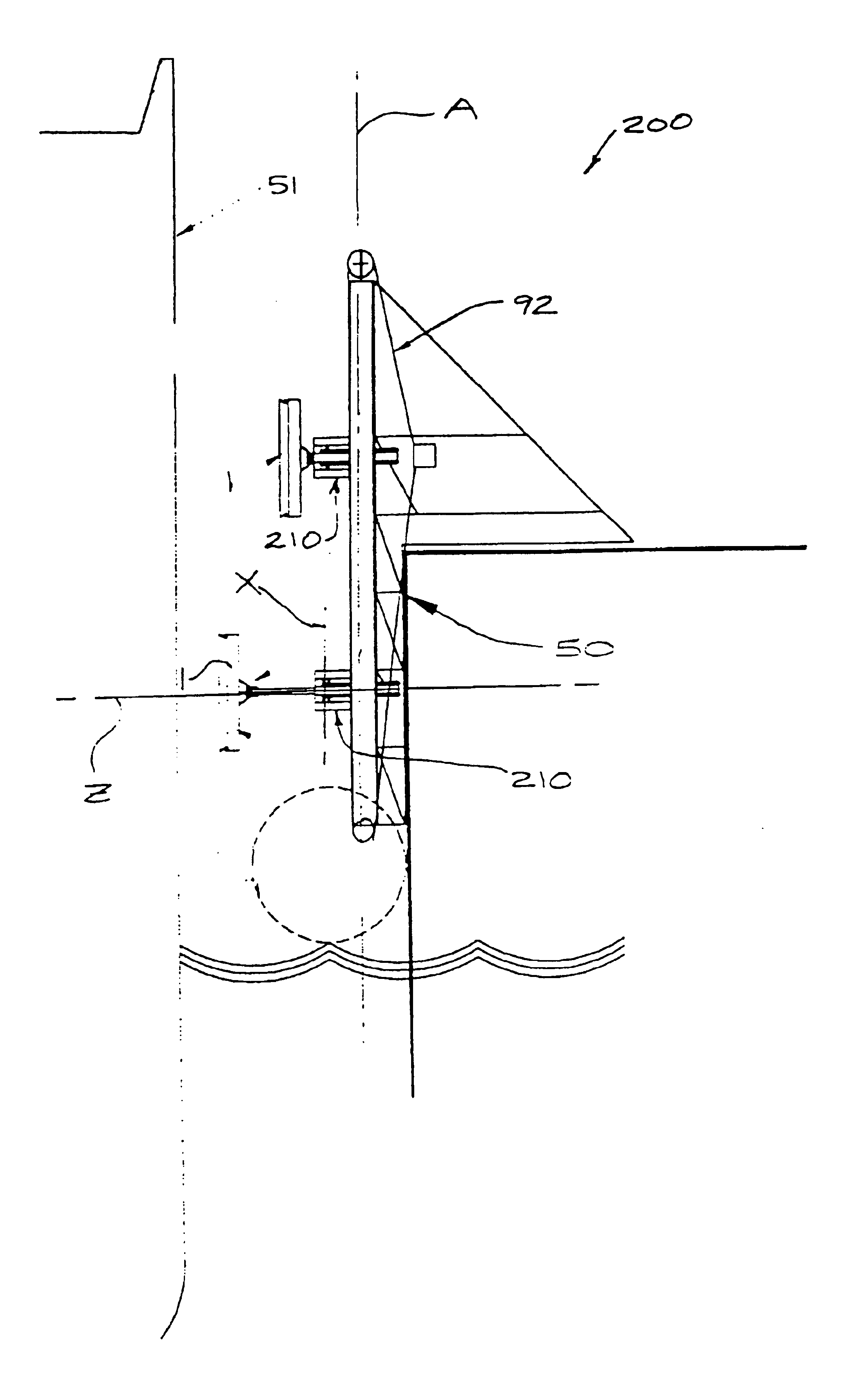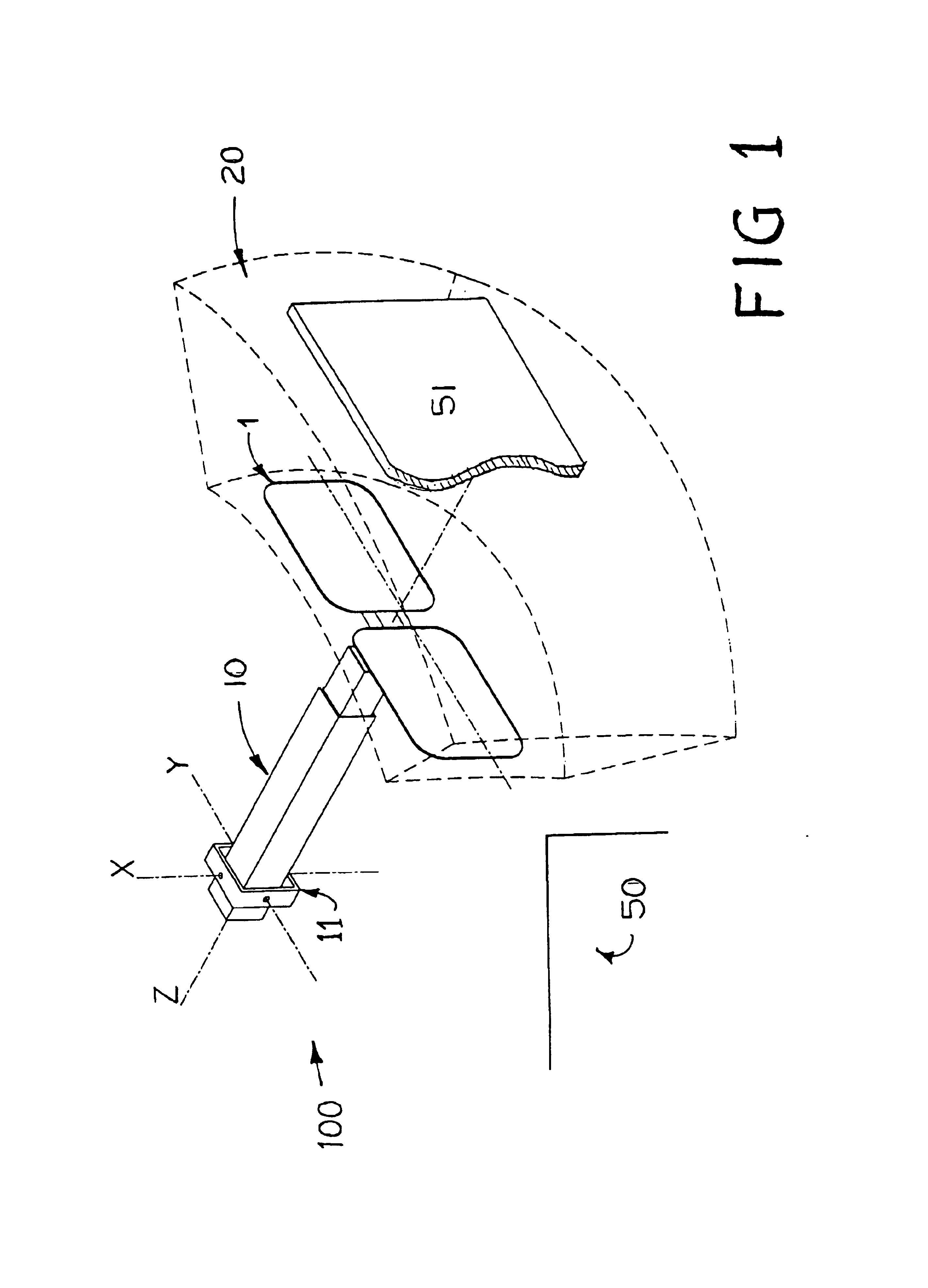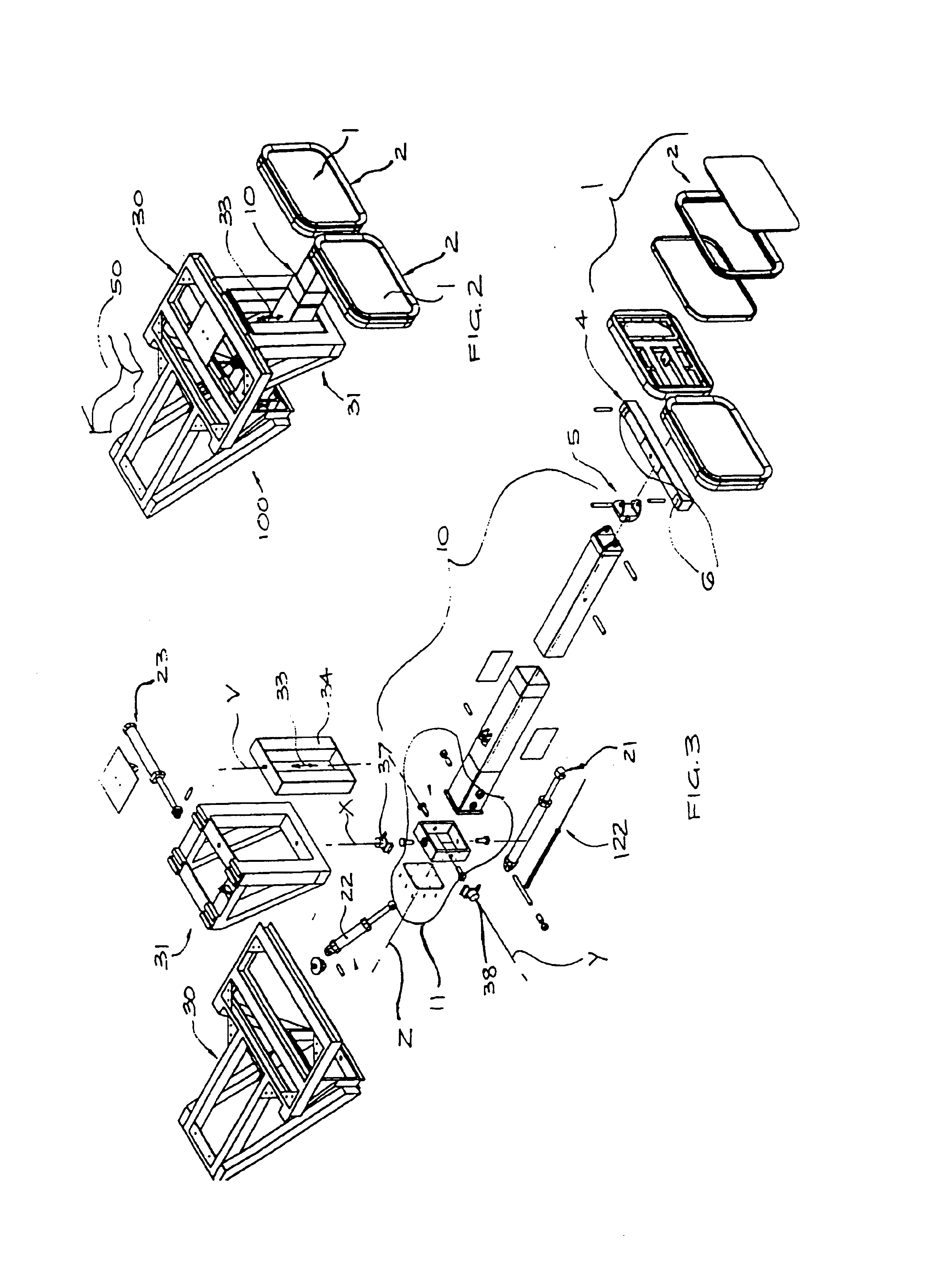Mooring device
a mooring device and a technology of a stern are applied in the field of mooring devices, which can solve the problems of inability to absorb the force acting on the vessel in the fore and aft directions, the prehensile assembly is not adapted to be quickly disengaged, and the vessel must be specially adapted, so as to achieve the effect of simple and effective operation and maintenance, and minimum care or adjustmen
- Summary
- Abstract
- Description
- Claims
- Application Information
AI Technical Summary
Benefits of technology
Problems solved by technology
Method used
Image
Examples
Embodiment Construction
[0059]Referring to FIG. 1, a first preferred embodiment of a mooring robot 100 of the present invention (illustrated schematically) is fixed to a dock 50 and may be fastened to the hull 51 of a vessel by means of vacuum cups 1. The mooring robot 100 includes a robot arm 10, having three degrees of translational freedom for positioning the vacuum cups 1 anywhere within a three-dimensional operating envelope 20. The robot arm 10 provides a telescoping movement along axis Z and is fixed at one end in a gimbal 11 for rotation about two orthogonal axes X and Y, which are substantially vertical and horizontal respectively.
[0060]FIG. 2 illustrates this first preferred embodiment of the mooring robot 100, which includes a mounting frame 30 fixed to the dock 50. The robot arm 10 is fixed by means of the gimbal 11 (FIG. 1) to the mounting frame 30, and protrudes through a vertically extending aperture 33 in a sub-frame 31 which is slidably connected to the mounting frame 30. The sub-frame 31 ...
PUM
 Login to View More
Login to View More Abstract
Description
Claims
Application Information
 Login to View More
Login to View More - R&D
- Intellectual Property
- Life Sciences
- Materials
- Tech Scout
- Unparalleled Data Quality
- Higher Quality Content
- 60% Fewer Hallucinations
Browse by: Latest US Patents, China's latest patents, Technical Efficacy Thesaurus, Application Domain, Technology Topic, Popular Technical Reports.
© 2025 PatSnap. All rights reserved.Legal|Privacy policy|Modern Slavery Act Transparency Statement|Sitemap|About US| Contact US: help@patsnap.com



